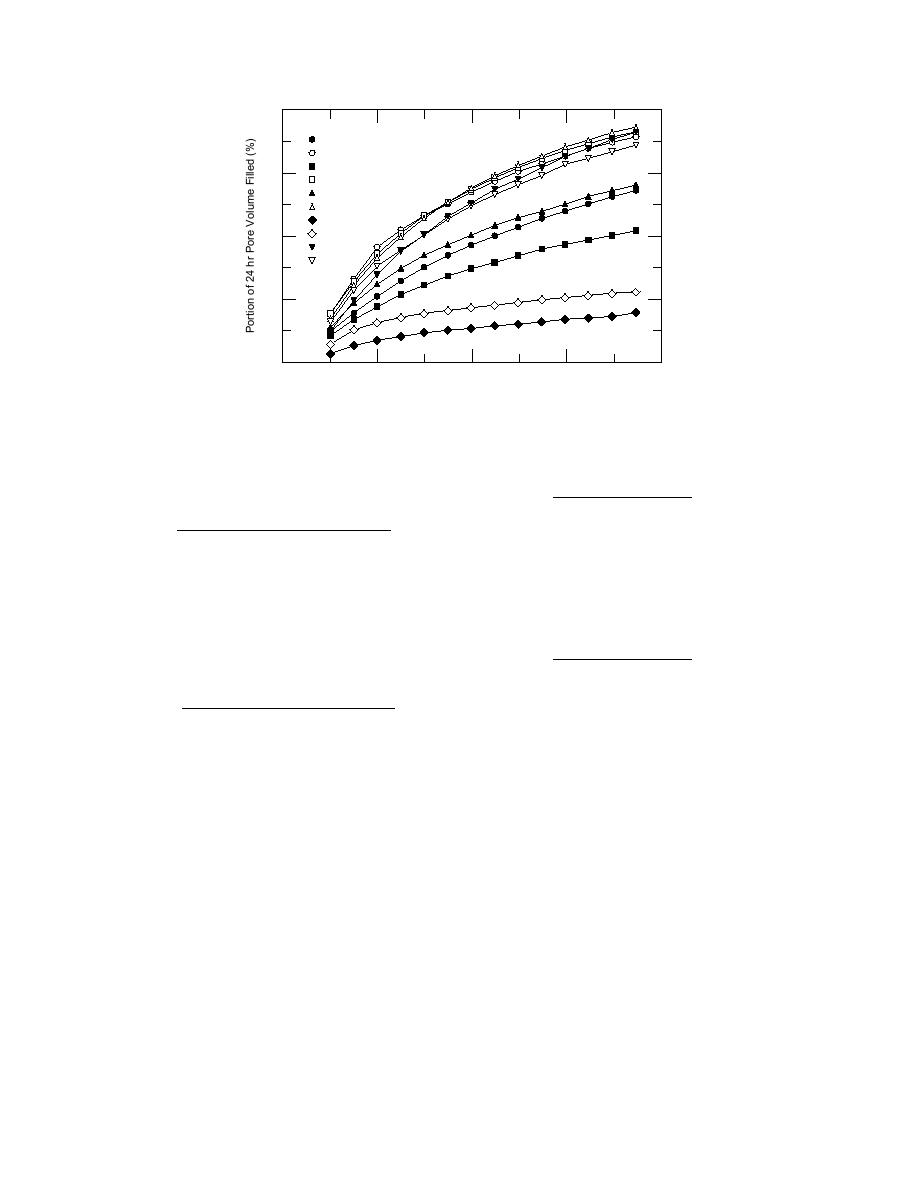
16
3593
3595
3632
12
3666
3704
3791
4130
4204
8
4205
4206
4
0
0
4
8
12
16
Time (min)
Figure 1. Absorption rates.
Table 5. Crushing
Table 4. Ranked absorption read-
value results (%).
ings.
Sample
10 FT* No FT
Percent
Absorption
filled
Relative
24-hr
3987
16.1
5.5
Sample
(6 min)
fill rate
(%)
3990
17.2
20.6
3992
18.7
16.7
3666
9.3
Fast
1.18
3991
20.2
21.3
3791
9.1
1.10
2989
22.0
22.3
3595
9.1
2.00
3035
23.0
24.8
4205
8.1
0.54
4141
25.9
30.6
4206
8.1
0.95
4014
27.5
25.5
3704
6.8
Medium
1.04
4033
30.9
37.0
3593
6.0
1.75
4015
33.8
30.8
3632
4.9
1.45
* Freezethaw cycles.
4204
3.1
Slow
2.99
4130
1.8
2.53
In this portion of testing, we compressed aggre-
calculated by dividing the weight passing the no. 4
gates that had been freezethaw cycled in a labora-
sieve by the original weight and was expressed as
tory testing machine in the belief that doing so
a percentage.
might complete any damage that freezing had
Material for this portion of testing came from
started and thereby manifest the full extent of frost
the second aggregate group. Crush testing was
damage.
done on one set of aggregates after 10 freezethaw
Our crush test was a modified British Standards
cycles and on another set with no freezethaw
Institute (1990) test--BS 812--used to provide in-
cycles. Table 5 shows these results.
formation about aggregate strength. The proce-
Significant variation exists between the control
dure involved placing 500 g of oven dried aggre-
and the freezethaw results, suggesting that this
gate, which passed a 1-in. (25-mm) sieve and was
procedure is not sensitive enough to aid in distin-
retained on a 3/4-in. (19-mm) sieve, into a 3-in. (7.9-
guishing durable from frost-susceptible aggregate.
cm) diameter steel cylinder. The cylinder was
Perhaps choosing different loading patterns may
tapped 25 times with a rubber mallet to consoli-
prove useful in future research.
date the aggregate, and a solid steel plunger was
pressed into the top of the aggregate by a 300,000-
Pore size distribution
lbf (1335-kN) Riehle universal testing machine
Mercury porosimetry was used to characterize
loaded to 3200 lb/in.2 (22,000 kPa). The aggregate
the pore size distribution of aggregates from the
was removed from the test cylinder and sifted
first sample group. Mercury porosimetry involves
through a no. 4 sieve. The crushing value was
injecting high-pressure mercury into the voids of a
5



 Previous Page
Previous Page
